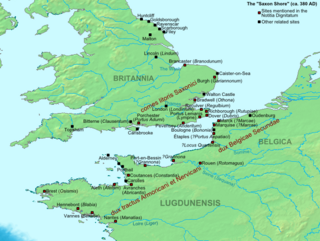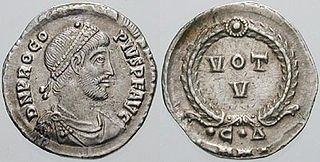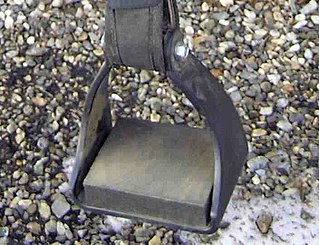Related Research Articles

The 4th century was the time period from 301 CE to 400 CE (CD) in accordance with the Julian calendar. In the West, the early part of the century was shaped by Constantine the Great, who became the first Roman emperor to adopt Christianity. Gaining sole reign of the empire, he is also noted for re-establishing a single imperial capital, choosing the site of ancient Byzantium in 330 to build the city soon called Nova Roma ; it was later renamed Constantinople in his honor.
The 320s decade ran from January 1, 320, to December 31, 329.

Year 325 (CCCXXV) was a common year starting on Friday of the Julian calendar. At the time, it was known as the Year of the Consulship of Proculus and Paulinus. The denomination 325 for this year has been used since the early medieval period, when the Anno Domini calendar era became the prevalent method in Europe for naming years.

Year 313 (CCCXIII) was a common year starting on Thursday of the Julian calendar. At the time, it was known as the Year of the Consulship of Constantinus and Licinianus. The denomination 313 for this year has been used since the early medieval period, when the Anno Domini calendar era became the prevalent method in Europe for naming years. This year is notable for ending of the persecution of Christians in the Roman Empire.

Year 1234 (MCCXXXIV) was a common year starting on Sunday of the Julian calendar.

1200 (MCC) was a leap year starting on Saturday of the Julian calendar, the 1200th year of the Common Era (CE) and Anno Domini (AD) designations, the 200th year of the 2nd millennium, the 100th and last year of the 12th century, and the 1st year of the 1200s decade. As of the start of 1200, the Gregorian calendar was 7 days ahead of the Julian calendar, which was the dominant calendar of the time.

Year 300 (CCC) was a leap year starting on Monday of the Julian calendar. At the time, it was known as the Year of the Consulship of Constantius and Valerius. The denomination 300 for this year has been used since the early Middle Ages / Medieval period, when the Latin language term / abbreviation "Anno Domini" for the calendar era became the prevalent universal / worldwide method for naming and numbering years. First beginning in Europe at the end of the Roman Empire (after the split of the Western Roman Empire and Eastern Roman Empire in the early Middle Ages / Medieval period.
Year 255 (CCLV) was a common year starting on Monday of the Julian calendar. At the time, it was known in Rome as the Year of the Consulship of Valerianus and Gallienus. The denomination 255 for this year has been used since the early medieval period, when the Anno Domini calendar era became the prevalent method in Europe for naming years.

Year 290 (CCXC) was a common year starting on Wednesday of the Julian calendar. In the Roman Empire, it was known as the Year of the Consulship of Valerius and Valerius. The denomination 290 for this year has been used since the early medieval period, when the Anno Domini calendar era became the prevalent method in Europe for naming years.

Year 279 (CCLXXIX) was a common year starting on Wednesday of the Julian calendar. At the time, it was known in Rome as the Year of the Consulship of Probus and Paternus. The denomination 279 for this year has been used since the early medieval period, when the Anno Domini calendar era became the prevalent method in Europe for naming years.

Year 266 (CCLXVI) was a common year starting on Monday of the Julian calendar. At the time, it was known as the Year of the Consulship of Gallienus and Sabinillus. The denomination 266 for this year has been used since the early medieval period, when the Anno Domini calendar era became the prevalent method in Europe for naming years.

Year 365 (CCCLXV) was a common year starting on Saturday of the Julian calendar. At the time, it was known in the West as the Year of the Consulship of Augustus and Valens. The denomination 365 for this year has been used since the early medieval period, when the Anno Domini calendar era became the prevalent method in Europe for naming years.
Year 344 (CCCXLIV) was a leap year starting on Sunday of the Julian calendar. At the time, it was known as the Year of the Consulship of Leontius and Bonosus. The denomination 344 for this year has been used since the early medieval period, when the Anno Domini calendar era became the prevalent method in Europe for naming years.
Year 343 (CCCXLIII) was a common year starting on Saturday of the Julian calendar. At the time, it was known as the Year of the Consulship of Memmius and Romulus. The denomination 343 for this year has been used since the early medieval period, when the Anno Domini calendar era became the prevalent method in Europe for naming years.

Year 342 (CCCXLII) was a common year starting on Friday of the Julian calendar. At the time, it was known as the Year of the Consulship of Constantius and Claudius. The denomination 342 for this year has been used since the early medieval period, when the Anno Domini calendar era became the prevalent method in Europe for naming years.
Year 317 (CCCXVII) was a common year starting on Tuesday of the Julian calendar. At the time, it was known as the Year of the Consulship of Gallicanus and Bassus. The denomination 317 for this year has been used since the early medieval period, when the Anno Domini calendar era became the prevalent method in Europe for naming years.

A stirrup is a light frame or ring that holds the foot of a rider, attached to the saddle by a strap, often called a stirrup leather. Stirrups are usually paired and are used to aid in mounting and as a support while using a riding animal. They greatly increase the rider's ability to stay in the saddle and control the mount, increasing the animal's usefulness to humans in areas such as communication, transportation, and warfare.
Emperor Cheng of Jin, personal name Sima Yan (司馬衍), courtesy name Shigen (世根), was an emperor of the Chinese Eastern Jin dynasty. He was the eldest son of Emperor Ming and became the crown prince on April 1, 325. During his reign, the administration was largely dominated by a succession of regents—initially his uncle Yu Liang, then Wang Dao, then the joint administration of He Chong and another uncle Yu Bing. He became emperor at age four, and soon after his accession to the throne, the disastrous rebellion of Su Jun weakened Jin forces for decades.

This is a timeline of the Jin dynasty (266–420) and the Sixteen Kingdoms (304–439).

The military history of the Jin dynasty and the Sixteen Kingdoms encompasses the period of Chinese military activities from 266 AD to 420 AD. The Jin dynasty is usually divided into the Western Jin and Eastern Jin in Chinese historiography. Western Jin lasted from its usurpation of Cao Wei in 266 to 316 when the Uprising of the Five Barbarians split the empire and created a number of barbarian states in the north. The Jin court relocated to Jiankang, starting the era of Eastern Jin, which ended in 420 when it was usurped by Liu Yu, who founded the Liu Song dynasty.
References
- ↑ "The stirrup and its effect on chinese military history". www.silkroadfoundation.org. Retrieved November 6, 2023.